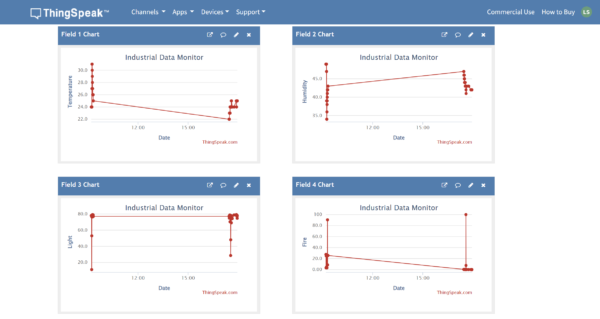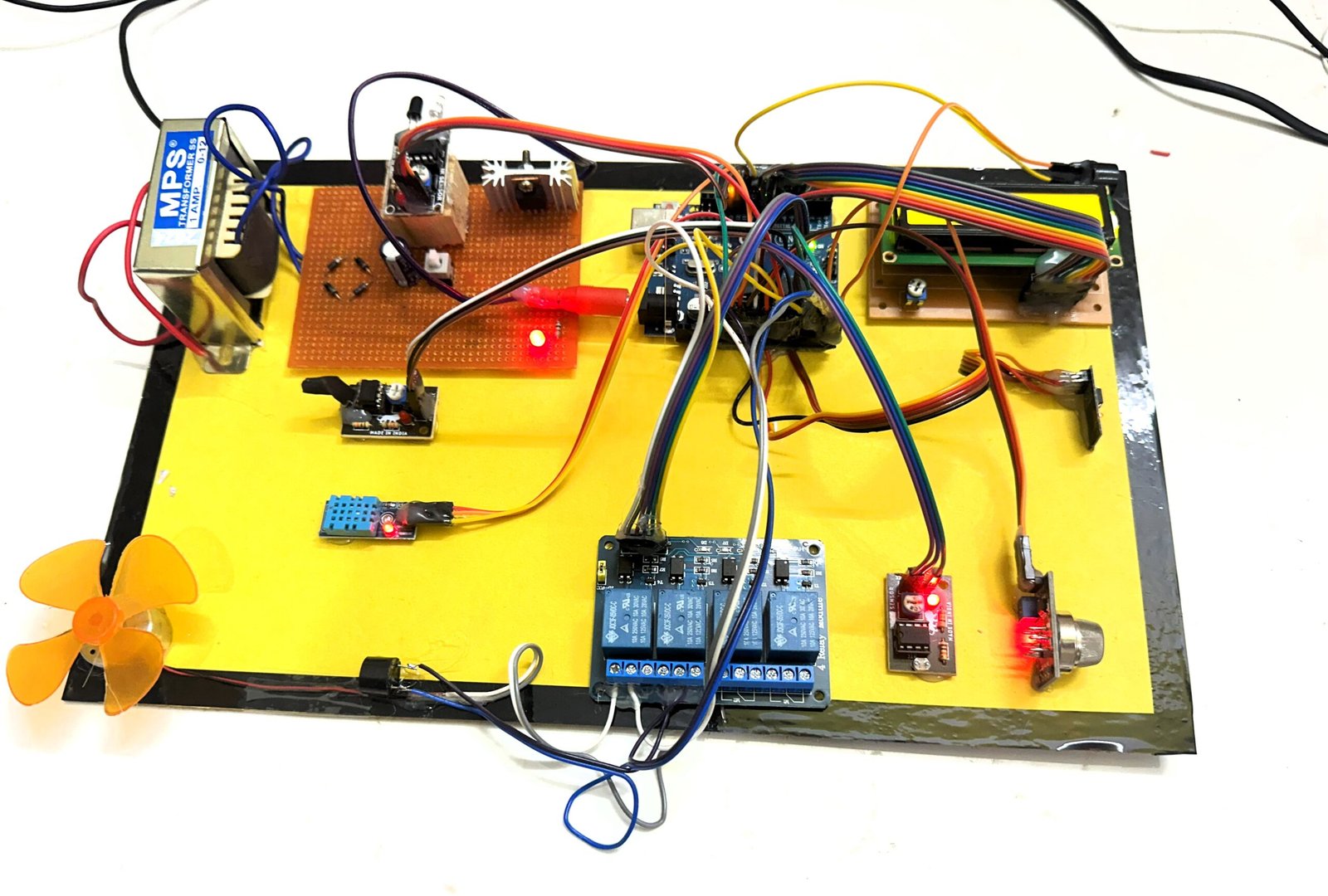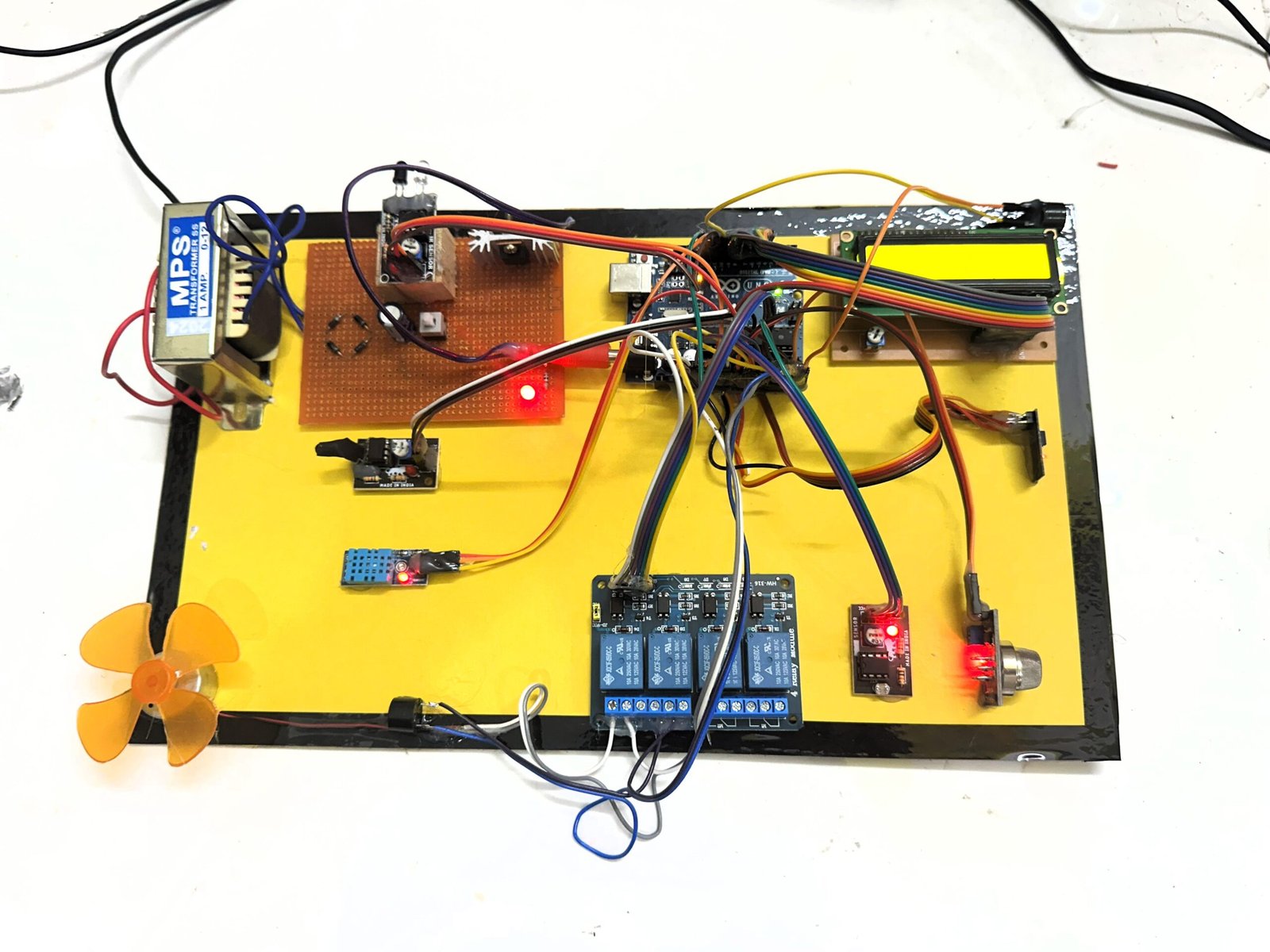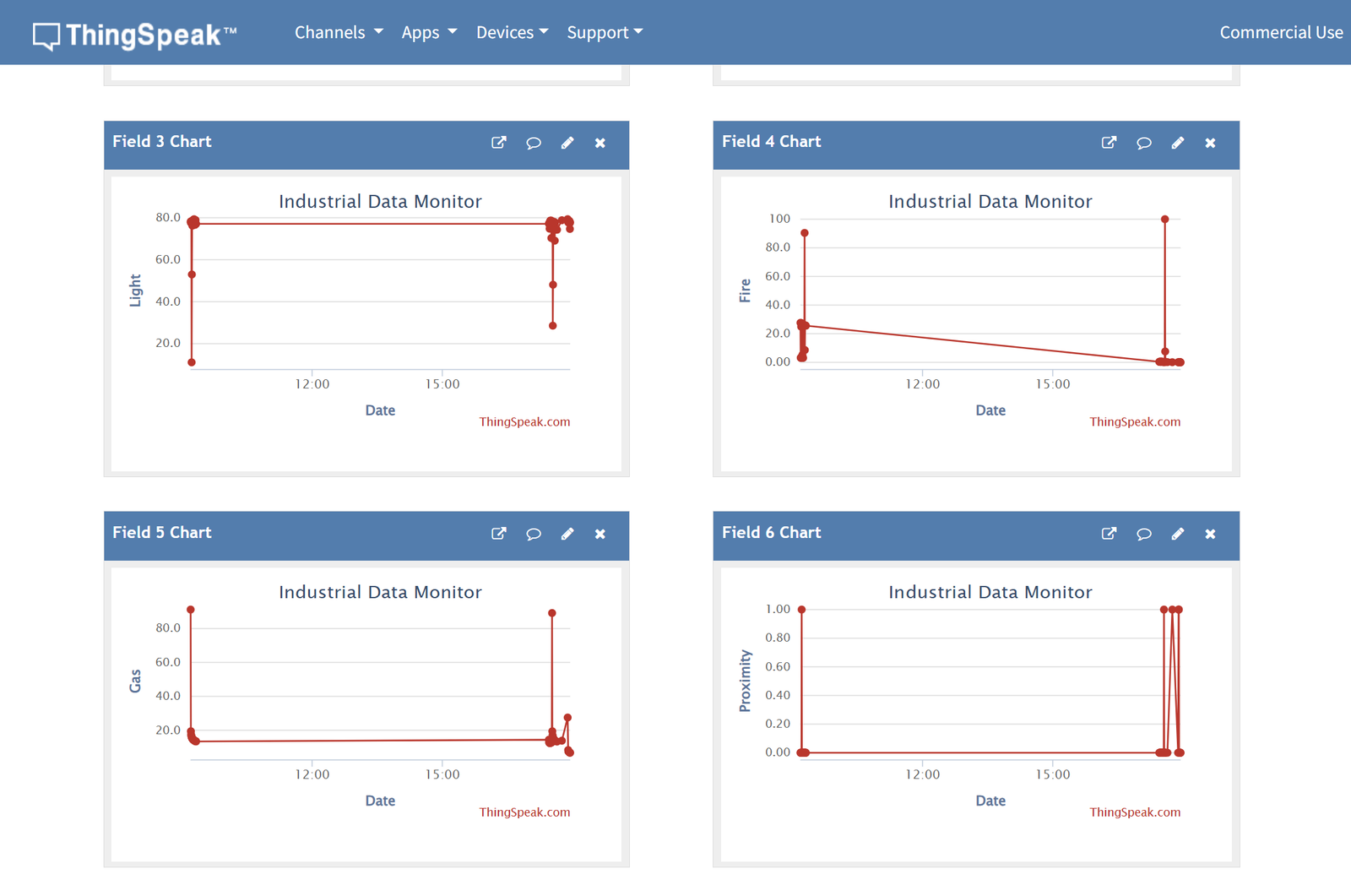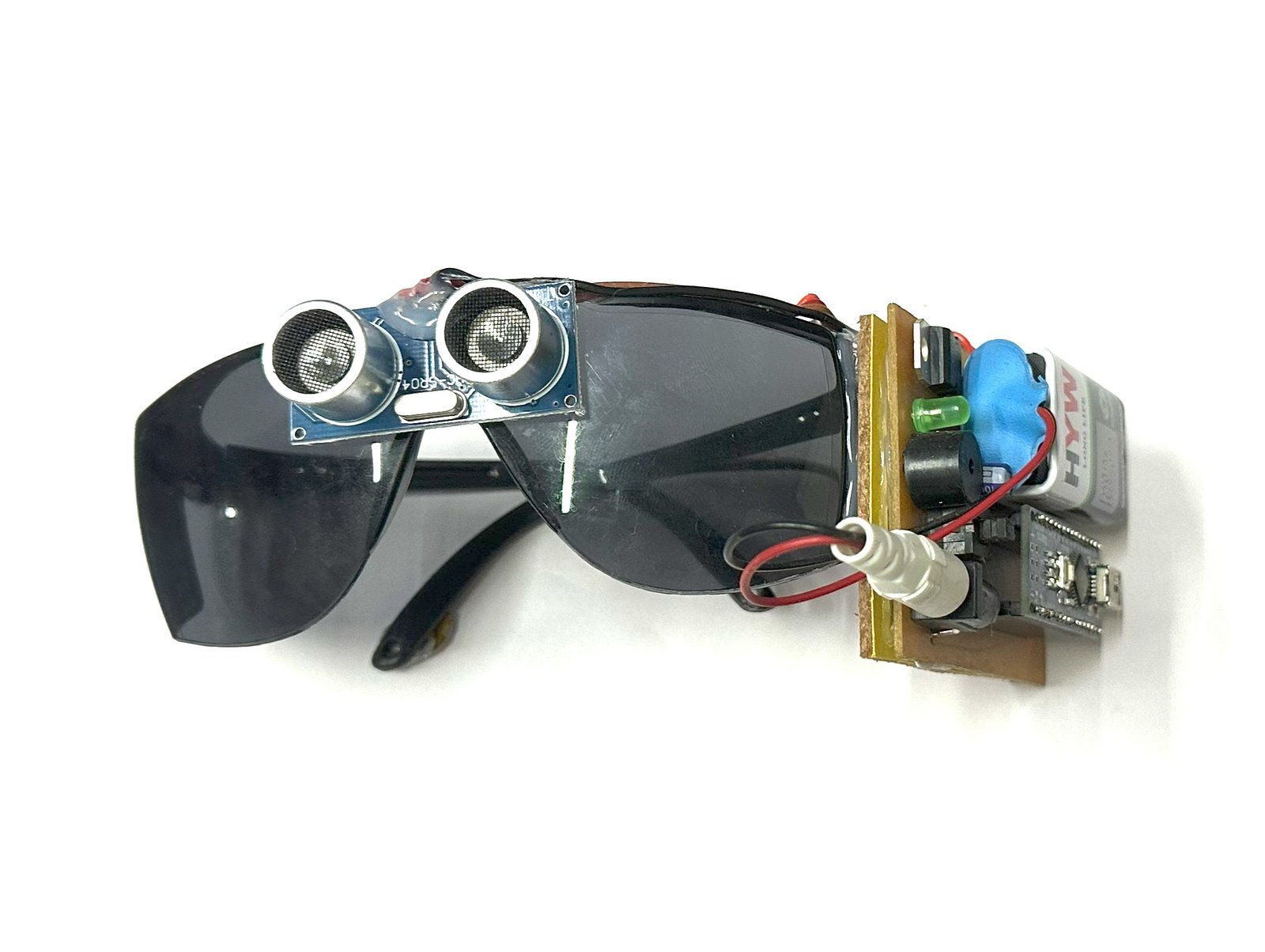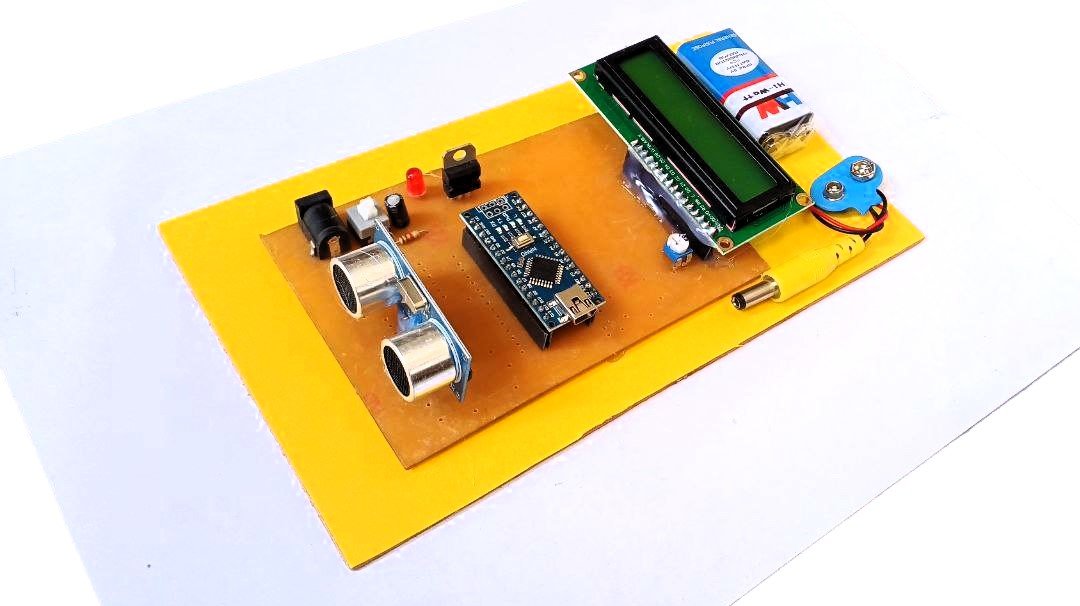Industrial IoT (IIoT) Sensor Monitoring System
Original price was: 8,000.00₹.6,000.00₹Current price is: 6,000.00₹.
An Industrial IoT Sensor Monitoring System uses Arduino and ESP8266 to monitor environmental parameters like temperature, humidity, light, gas, and fire. It integrates sensors, actuators, and a display for real-time data visualization and automated responses.
- No Branding.
- 100% working. Tested by S.R. Robotics.
- FREE Report + Ppt + Synopsis.
- FREE Shipping.
- Description
Description
The Industrial IoT (IIoT) Sensor Monitoring System is designed for real-time monitoring and control of environmental and safety parameters in industrial settings. It integrates a variety of sensors, actuators, and connectivity modules to provide comprehensive monitoring and automation capabilities. This system uses an Arduino microcontroller as the main processing unit, coupled with a Wi-Fi module (ESP8266) for remote data transmission and control.
Benefits
- Enhanced Safety: Monitors environmental conditions such as smoke, fire, and gas levels to prevent hazardous situations.
- Real-time Monitoring: Provides continuous updates and alerts to ensure that conditions remain within safe thresholds.
- Remote Access: Allows operators to monitor data remotely, improving the speed of response to potential issues.
- Energy Efficiency: Automated control of systems such as exhaust fans and DC motors helps in reducing energy consumption.
- Predictive Maintenance: Helps in detecting early signs of equipment failure, reducing downtime and maintenance costs.
- User-Friendly Interface: LCD display provides instant information, and switches allow manual control if needed.
Working
- Sensors and Inputs:
- DHT11 Sensor: Measures temperature and humidity and provides data to the Arduino.
- LDR (Light Dependent Resistor): Detects light levels for automated lighting control.
- Smoke/Gas Sensor: Monitors air quality and detects harmful gases.
- Fire Sensor: Detects fire and alerts the system.
- IR Sensor: Used for motion detection or as an obstacle detection sensor.
- Microcontroller: The Arduino microcontroller processes data from sensors and manages the control of actuators.
- Wi-Fi Module (ESP8266): Transmits sensor data to a remote monitoring platform or mobile application.
- Relay Module: Controls the operation of the exhaust fan and DC motor by switching power on or off.
- Actuators:
- 5V DC Motor: Can be used for automation tasks like opening or closing a gate or valve.
- Exhaust Fan: Activated to control the temperature and air quality.
- Display and Alerts:
- LCD Display (16×2): Shows real-time sensor data and status updates for easy monitoring.
- Buzzer: Emits an alert when critical thresholds are exceeded (e.g., high temperature, smoke, or gas detection).
- Controls:
- Switches: Allow manual operation of certain components, such as turning the exhaust fan on or off.
- Potentiometer: Used to adjust and fine-tune certain parameters such as sensitivity levels.
- Power Supply:
- DC Power Adapter: Supplies the necessary power to the entire system.
Components
- Arduino Microcontroller: Central processing unit for system control.
- Wi-Fi Module (ESP8266): Provides wireless communication capabilities.
- Temperature and Humidity Sensor (DHT11): Measures ambient temperature and humidity.
- Light Dependent Resistor (LDR): Senses light levels.
- Smoke/Gas Sensor: Detects the presence of smoke or gas.
- Fire Sensor: Detects fire and triggers alarms or control mechanisms.
- IR Sensor: Detects movement or objects.
- 4 Channel Relay Module (5V): Controls the on/off states of connected devices.
- 5V DC Motor: Used for automation tasks.
- Exhaust Fan: Helps in ventilating the space and controlling air quality.
- Switches: Used for manual control of components.
- LCD Display (16×2): Shows data and status to users.
- Potentiometer: Used for adjusting parameters.
- 10 K-ohm Resistor [2 units]: Used for signal conditioning.
- Buzzer: Provides audible alerts for alarms.
- DC Power Adapter: Powers the entire system.
This IIoT sensor monitoring system ensures a safer, more efficient, and well-regulated industrial environment.







